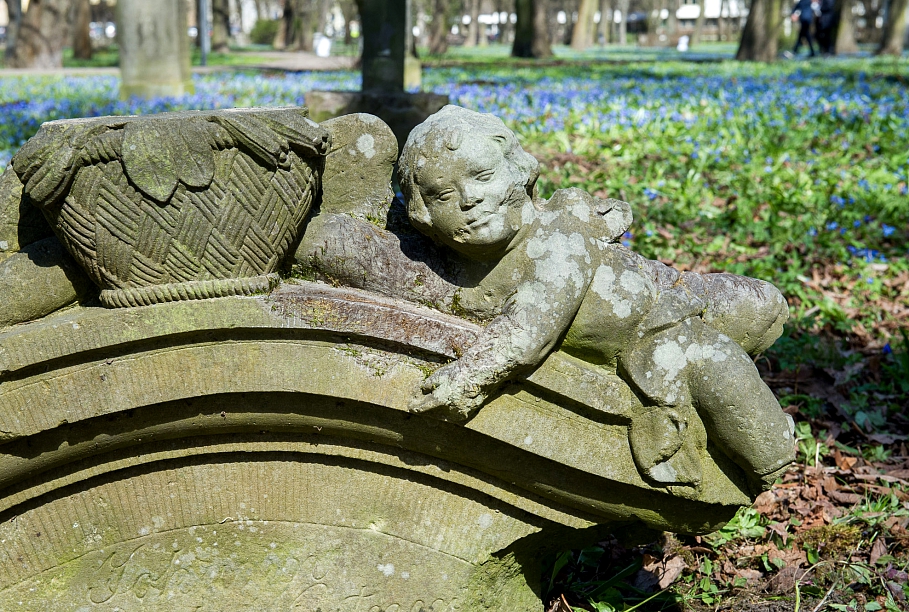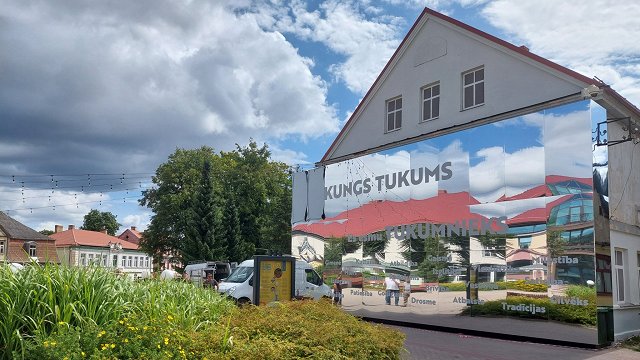Locals help doing the minimum
During the Big Cleanup, local Sigita Mālmane chose to do her part in sweeping the cemetery. Latvian Radio's Māra Rozenberga caught her with a broom in her hands.
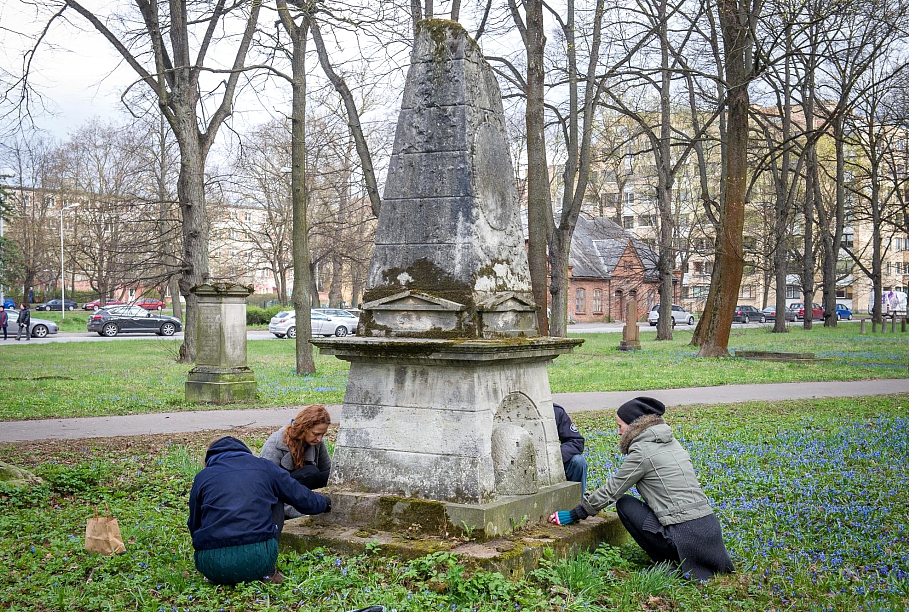
"A street sweeper had supposedly gone through here, however what I saw was unacceptable so I started sweeping on the way," Mālmane said, revealing that she's doing the sweeping regularly.
She's also a volunteer taking care of the grave of Krišjānis Barons, a seminal figure who systematized Latvian folk songs gleaned from locals.
Mālmane and several dozen enthusiasts have started a group that aims to scrub away moss from the Great Cemetery's monuments, to sweep footpaths and pick up the trash.
Since last autumn, they regularly clean up the cemetery a task neither the city, nor the church owning the land have undertaken so far.
"If everyone comes two or three times a year and helps cleaning up the territory, we will make it so it's pretty," said restorer Andrejs Ļebedevs, part of the group.
A little history
The Great Cemetery was founded in 1773 as due to plague outbreaks the Russian Empire banned burials in church crypts or churchyards. Cemeteries had to be placed at least two kilometers from the city gates - which nowadays shows just how much Rīga has grown.
"There were only sand dunes and pines here, no houses," said Gunārs Ārmanis, a historian and a former long-time heritage protection expert at the construction authority.
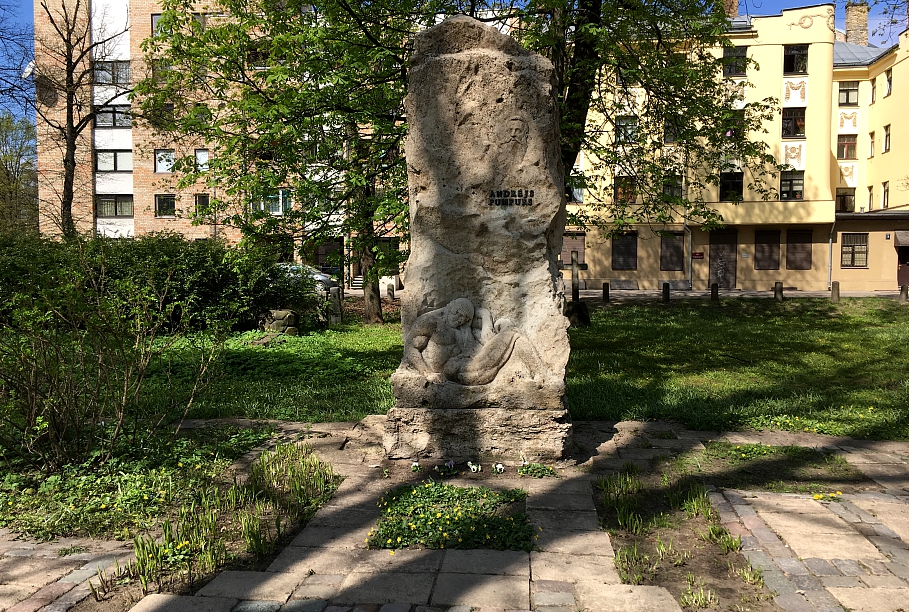
He lead Latvian Radio to the famous monument of epic poet Andrejs Pumpurs by the Klusā st.
Pumpurs is but one of the tens of thousands of Rigans laid to rest here during the 150 years before the cemetery was converted into a park.
Diving into the oldest part of the cemetery, Latvian Radio aimed to find the graves of at least few of the many great spirits that helped shape Latvian history.
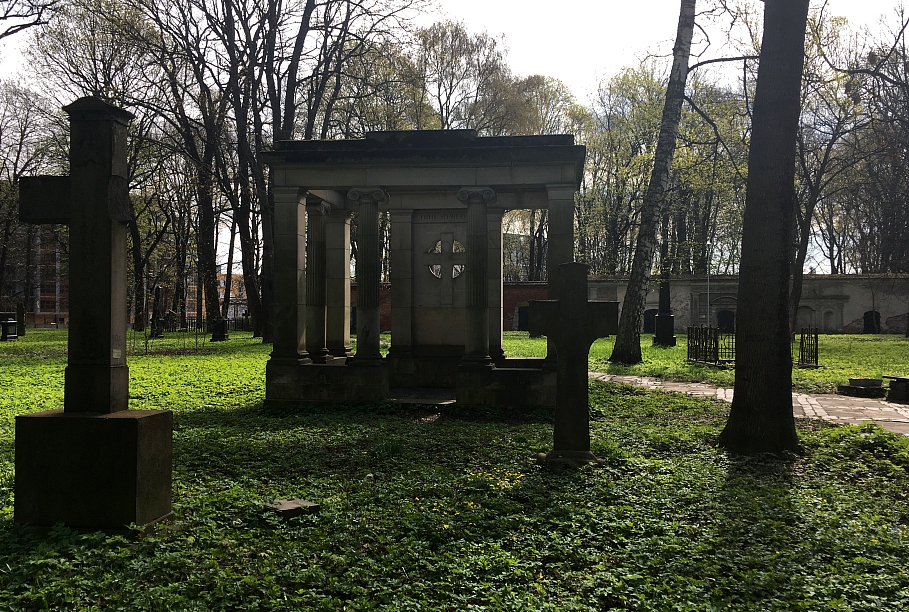
They started with Wilhelm Bockslaff. "Bockslaff, it's the Čiekurkalns water tower, the Academy of Art, Jaunmoku castle, Mālpils manor... Bockslaff is one of the first people who did a lot to protect heritage, so that parts of the Old Riga buildings wouldn't be destroyed but rather worked into yards of the city," Ārmanis told Latvian Radio about some of the ways the architect Wilhelm Bockslaff contributed to Rīga.
Bronze sculptures, Art Noveau fences and resplendent crypts
The way to the monuments is still covered in leaves from last fall. They lie separated from the asphalted footpaths built in the 60s as the cemetery was reshaped into a memorial park.
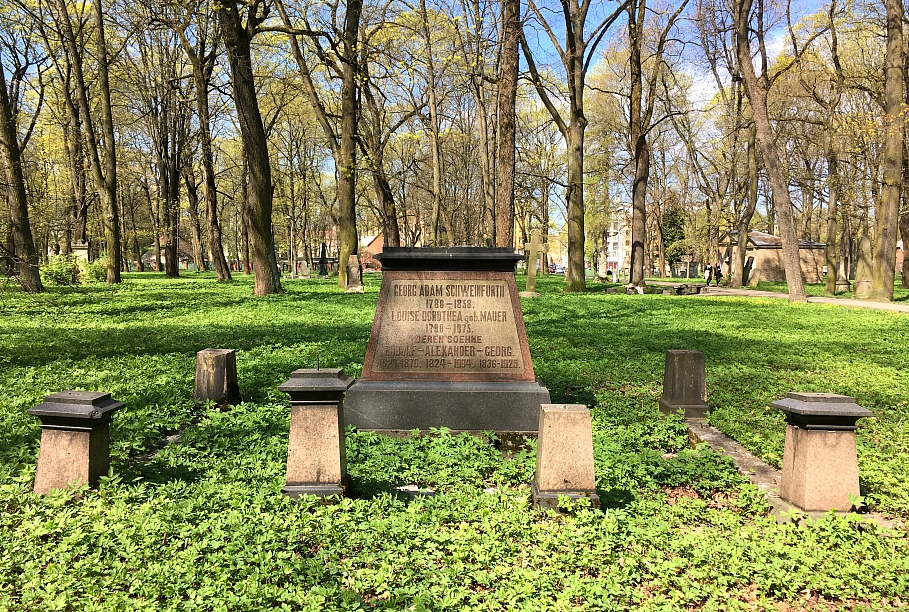
Ārmanis showed a monument of Georg Schweinfurth, a Baltic German who traveled to Africa in the 70s and 80s of the 18th century. He supposedly visited the Nile, Congo and went to see cannibals and pygmies.
"And think about it - it's just one of the thousands upon thousands of persons that maybe no one has ever been interested in. Here, above [on the pedestal of the monument] there was a beautiful bronze sphinx, like in Egypt," said Ārmanis.
Wealthy Rigans used to give their deceased relatives the best - bronze sculptures, memorial marks, fancy Art Noveau grave fences, and richly decorated crypts. However such splendor is testified to only in ancient paintings and photos, as only but a few details have made it into the present times. Many tombstones have been lost or taken away.
As burials ceased in the late 50s, many grave sites became overrun with moss and grass.
Lost splendor
On the way to the grave of Reinhold Schmeling - the head architect of Rīga for about 37 years, until the first world war - Latvian Radio also looked at the grave of Jēkabs Dukurs. The actor and director lies not far away from the Resurrection church.
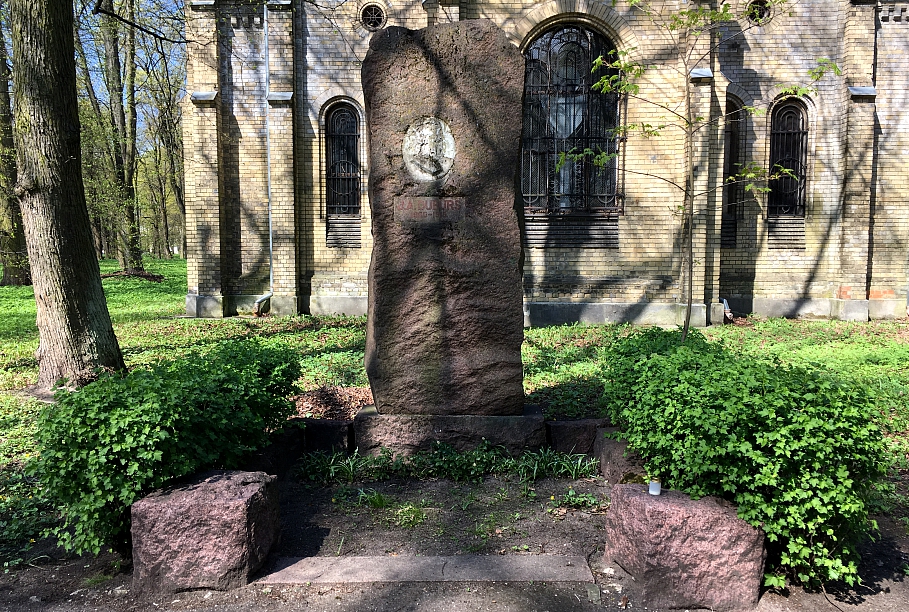
"He was born and died the same year as Janis Rozentāls, the famous painter. He is a Latvian actor, opera singer, the director of the Latvian Theater and an active public persona," Guntis Gailītis, the head of Rīga's Latvian Society, told Latvian Radio, pointing at where the bronze relief of the monument should have been.
Several other graves have suffered the same fate - like that of construction mogul Kristaps Bergs, after whom the Berg Bazaar in the city center was named. The renovators of Bergs' grave had to remove the valuable parts of his monument as they realized the parts would be snatched away otherwise.
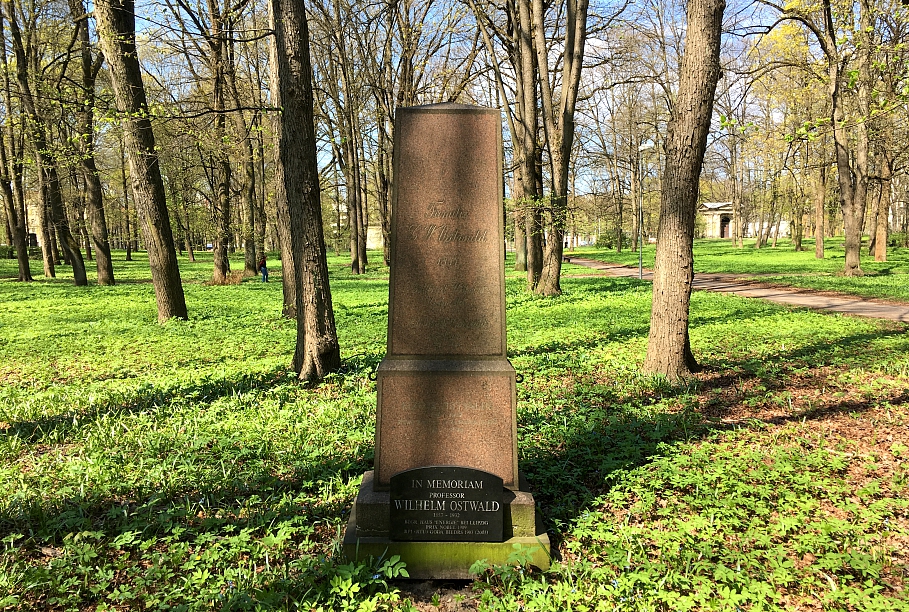
While directly opposite the grave is the last resting place of Wilhelm Ostwald, who received a Nobel Prize in chemistry - he's the only Nobel laureate in the cemetery, according to Ārmanis.
The street dividing the cemetery
The Senču st. was built right through the cemetery in the 60s, destroying part of the burials and splitting off parts of the cemetery from the rest.
Over the busy street is the small, fenced grave of August Voltz.
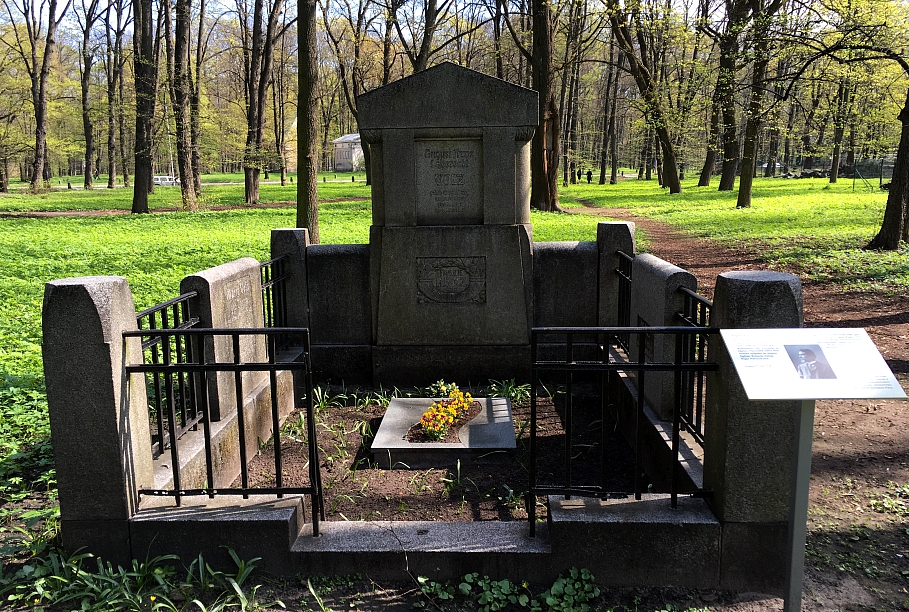
"It's my favorite sculptor who gave 50 years of his life to Rīga - just picture it, giving 50 years to the city. When we're walking in the center, the most beautiful nymphs and the most powerful Atlases, wherever you see them they've been mostly made by Voltz," said Ārmanis.
Who'll look after the greats?
Latvian Radio spoke to representatives of the Latvian Evangelical Lutheran Church, which owns the land of the cemetery.
"We do the minimum of maintenance, keeping footpaths in order. At least once, in the summer, we mow the grass and shovel snow in the winter," said Romāns Ganiņš, a representative of the church.
However it's clear that the church has no money to look after the vast expanse of land. However Ganiņš claimed that the church owns only the land, not the burial sites, perhaps implying that it's not the obligation of the church to look after the grave sites.
"It's sad that these great people have no living relatives left... despite that we have information that many do in fact have [living relatives]. So you can't say that it's a matter only for the church," said Ganiņš.
The church has quarreled with the city over what to do with the Great Cemetery. The church didn't want to outright give the land to the city, while Rīga doesn't want to sell or exchange it as the price offered was too high.
However it appears that things are about to change.
"The plan is as follows: the city is ready to offer the church another piece of land in exchange for the Great Cemetery," Rīga mayor Nils Ušakovs told Latvian Radio.
It follows then that a compromise has been reached about the value of the land. Ušakovs claimed that he has talked over the situation with the Latvian Lutheran Archbishop Jānis Vanags.
When asked when the exchange will take place, should it actually happen, Ušakovs said: "The exchange process usually lasts up to a year, provided that both parties have a wish to do the exchange."
Should the exchange take place, the municipality will have to come up with a vision on the future of the spacious and nationally significant cemetery.
Latvian Radio has created a map with famous and nationally significant people buried in the cemetery.
